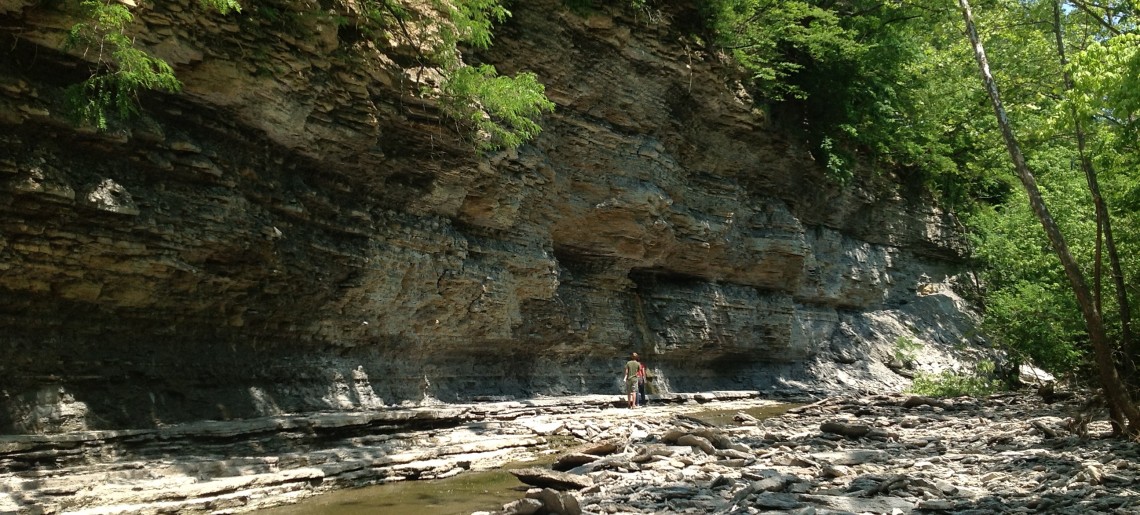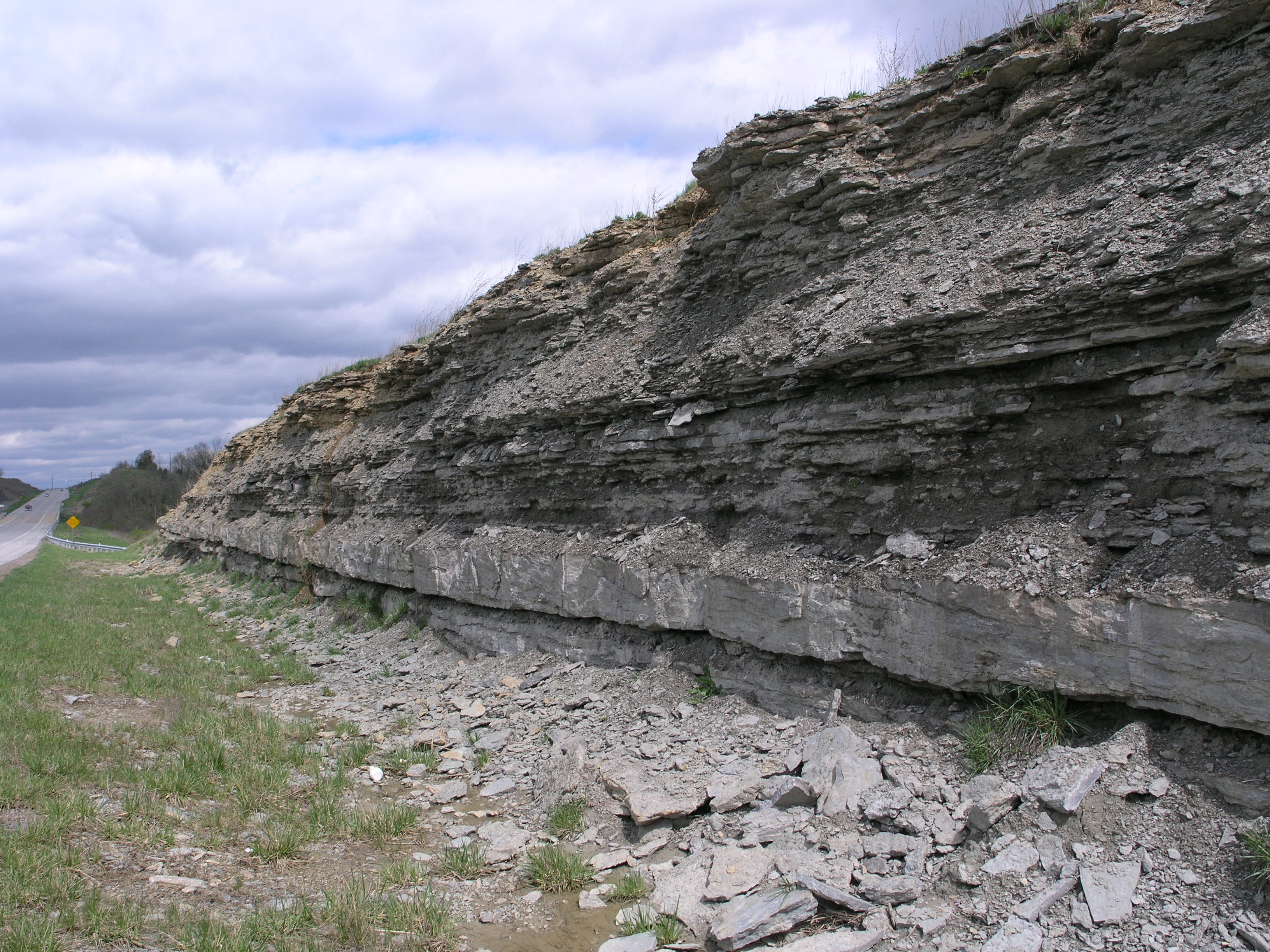
The strata surrounding Cincinnati, Ohio include some of the most fossiliferous and best preserved marine fauna in the world for the Late Ordovician interval. These rocks have been well studied for over a century. Notably, there is a dramatic change in fauna in strata of the lower Richmondian Stage as an influx of species that evolved in other, previously isolated, marine basins immigrate into the Cincinnati area. This influx of species is known as the Richmondian Invasion, and provides an exceptional opportunity to study invasive species dynamics in a tightly constrained case study.
Results of our work so far have clarified the source regions of the invaders, the impact of the influx of invaders on the endemic species, and the process by which invasive and endemic species partitioned environmental resources to assemble the post-invasion community. Upcoming publications will tackle the invasion dispersal dynamics in detail.
Associated with this work, the Stigall lab has developed a suite of online and mobile application (“app”) resources.
Representative publications:
Lam, A.R. & Stigall, A.L. 2015. Pathways and mechanisms of Late Ordovician (Cincinnatian) faunal migrations of Laurentia and Baltica. Estonian Journal of Earth Sciences, 64(1): 62-67. Open Access Supplemental materials: Open Access on figshare
Bauer, J.E. & Stigall, A.L. 2014. Phylogenetic paleobiogeography of Late Ordovician Laurentian brachiopods. Estonian Journal of Earth Sciences, 63(4): 189-194. Open Access Supplemental materials: Open Access on figshare
Stigall, A.L., Bauer, J.E. & Brame, H-M.R. 2014. The Digital Atlas of Ordovician Life: Digitizing and mobilizing data for paleontologists and the public. Estonian Journal of Earth Sciences, 63(4): 312-316. Open Access
Stigall, A.L. 2014. When and how do species achieve niche stability over long time scales? Ecography, 37: 1123-1132. Online
Stigall, A.L. & Brame, H-M.R. 2014. Relating environmental change and species stability in Late Ordovician seas. GFF: A Scandinavia Journal of Earth Sciences, 136: 249-253. Open Access
Brame, H-M.R. & Stigall, A.L. 2014. Controls on niche stability in geologic time: Congruent responses to biotic and abiotic environmental changes among Cincinnatian (Late Ordovician) marine invertebrates. Paleobiology, 40(1): 70-90 .Online
Wright, D.F. & Stigall, A.L. 2013. Geologic drivers of Late Ordovician faunal change in Laurentia: investigating links between tectonics, speciation, and biotic invasions. PLoS One, 8(7): e68353. Open Access
Stigall, A.L. 2012. Using ecological niche modeling to evaluate niche stability in deep time. Journal of Biogeography, 39: 772-781. Online
Malizia, R.W. & Stigall, A.L. 2011. Niche stability in Late Ordovician articulated brachiopod species before, during, and after the Richmondian Invasion. Palaeogeography, Palaeoclimatology, Palaeoecology, 311: 154-170. Online
Dudei, N.L. & Stigall, A.L. 2010. Using ecological niche modeling to assess biogeographic and niche response of brachiopod species to the Richmondian Invasion (Late Ordovician) in the Cincinnati Arch. Palaeogeography, Palaeoclimatology, Palaeoecology, 296: 28-47. Online
Stigall, A.L. 2010. Using GIS to assess the biogeographic impact of species invasions on native brachiopods during the Richmondian Invasion in the Type-Cincinnatian (Late Ordovician, Cincinnati region). Palaeontologia Electronica, 13: 5A, 19 p. Online
This research has been supported by grants from the National Science Foundation, American Chemical Society’s Petroleum Research Fund, and Ohio University.




